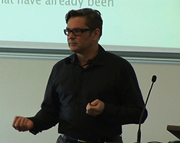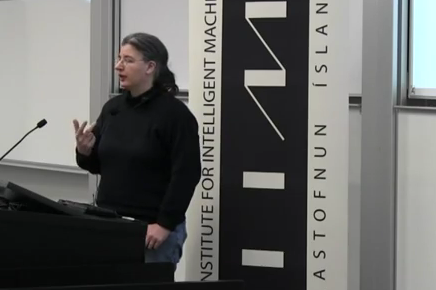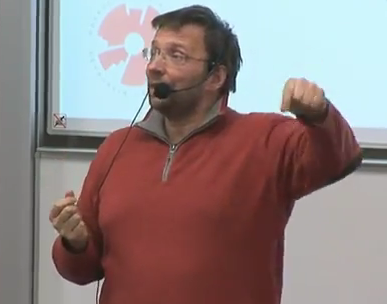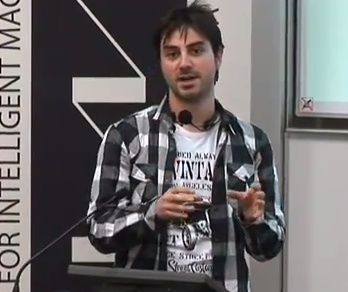 During his presentation Dr. Kristinn R. Thórisson introduced the RU-led, EU-funded HUMANOBS project that produced a radically new approach to machine learning. Rooted in cybernetics, this approach allows computer agents to learn complex tasks by observation, without the detailed information needed up-front in prior approaches.
During his presentation Dr. Kristinn R. Thórisson introduced the RU-led, EU-funded HUMANOBS project that produced a radically new approach to machine learning. Rooted in cybernetics, this approach allows computer agents to learn complex tasks by observation, without the detailed information needed up-front in prior approaches.
Video
Video Presentation from IIIM’s and CADIA’s Open Day – Dr. Jacky Mallett

At a time of uncertainty in the global economy, it is time to examine accepted economic theories. This is why Dr. Jacky Mallett introduced a very simple simulation of a one product economy with a constant money supply. Working with established equations, Dr. Mallett began questioning theories at the heart of the field. The results of her simulation have revealed that even the simplest economy has complexities that economists do not fully take into account, and that the market can behave in unexpected ways.
Continue reading Video Presentation from IIIM’s and CADIA’s Open Day – Dr. Jacky Mallett
Video Presentation from IIIM and CADIA’s Open Day – General Game Playing: Learning to Play

Game-playing has always proved a promising test ground for artificial general intelligence and tool for evaluating how a system learns. Dr. Yngvi Björnsson presented and explained General Game Playing (GGP) and its contribution to the field of AI. He also introduced the CADIA-Player, which recently won the 2012 international GGP Competition. The CADIA player has the unique ability to “think ahead” when it plays a game so that moves are optimized and the non-human player is competitive. Reykjavik University collaborates with Stanford and a broader international research community to develop GGP systems and solve many of the unanswered questions that still remain. Continue reading Video Presentation from IIIM and CADIA’s Open Day – General Game Playing: Learning to Play
First Impressions in Human-Agents Encounters – Presentation from IIIM’s and CADIA’s Open Day

First impressions are important and decided quickly. In just a dozen seconds of interaction, people can decide several things about the person who they are interacting with. PhD student Angelo Cafaro decided to apply this idea to an experiment involving Human–Agents encounters. Borrowing from the field of social psychology, Mr. Cafaro investigated the importance of non-verbal cues in encounters between humans and non-human agents. Smile and eye-contact, two of the variables tested, proved to be just as important in human-agent interactions as in human-human interactions. Continue reading First Impressions in Human-Agents Encounters – Presentation from IIIM’s and CADIA’s Open Day
